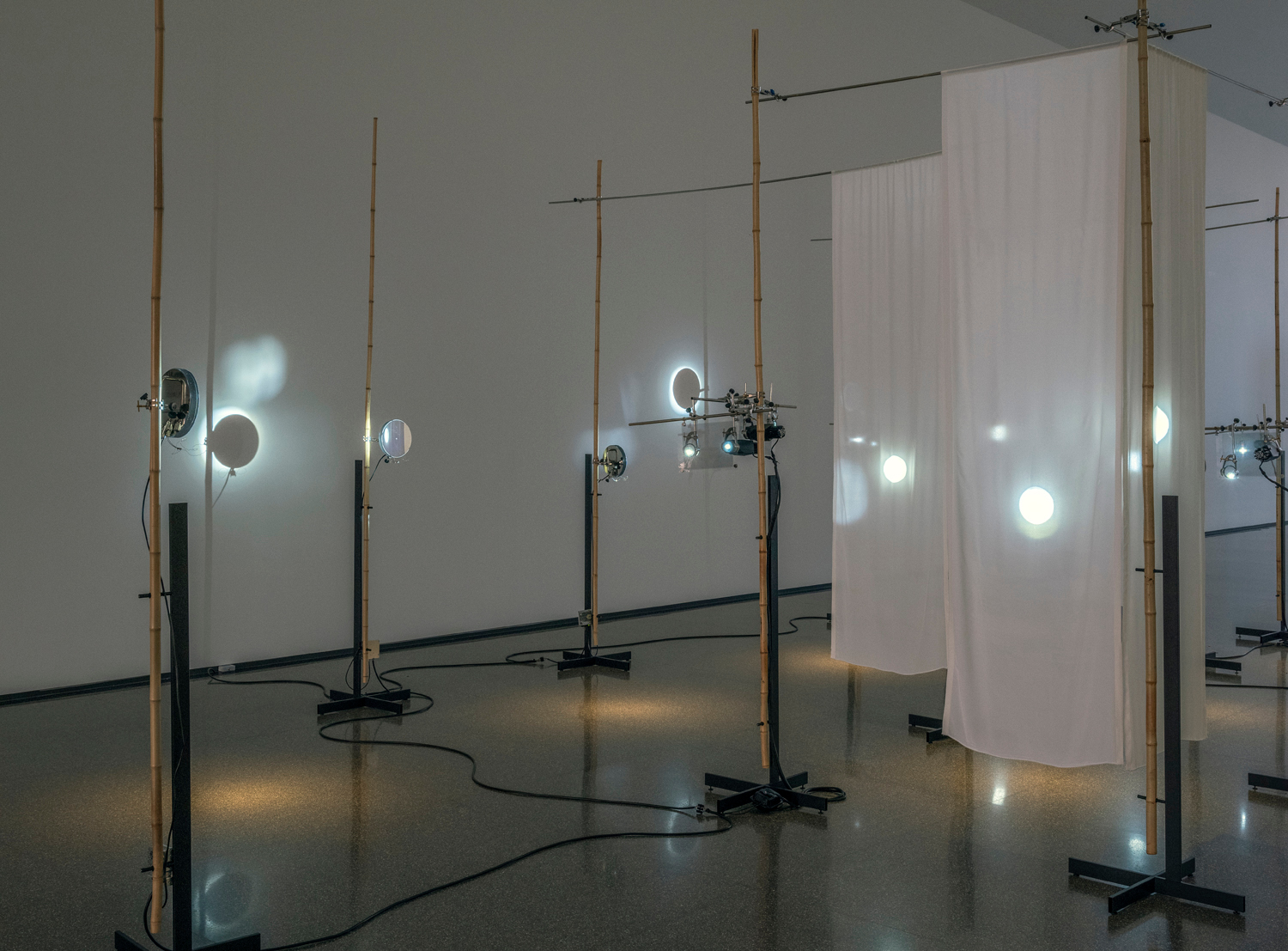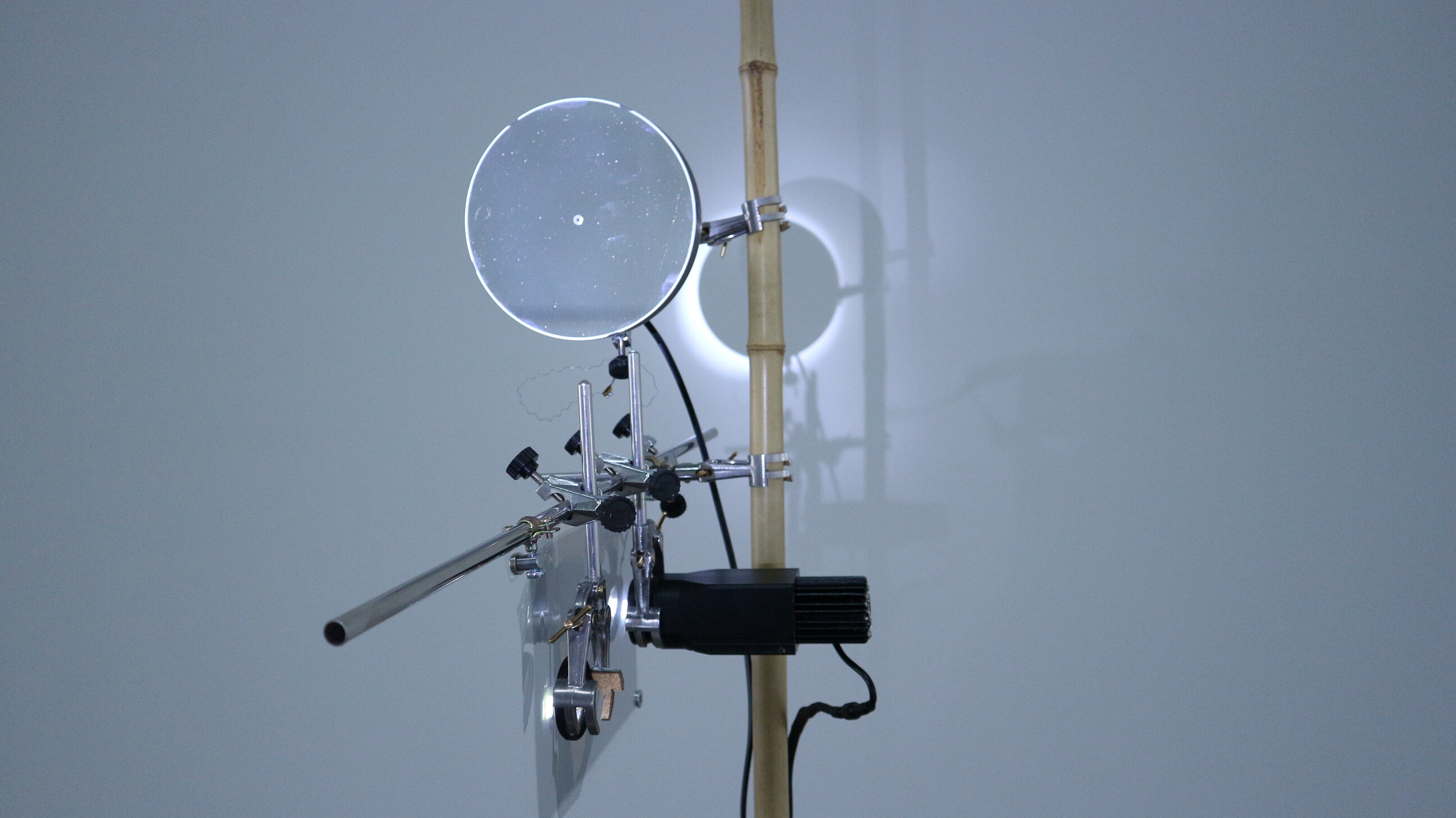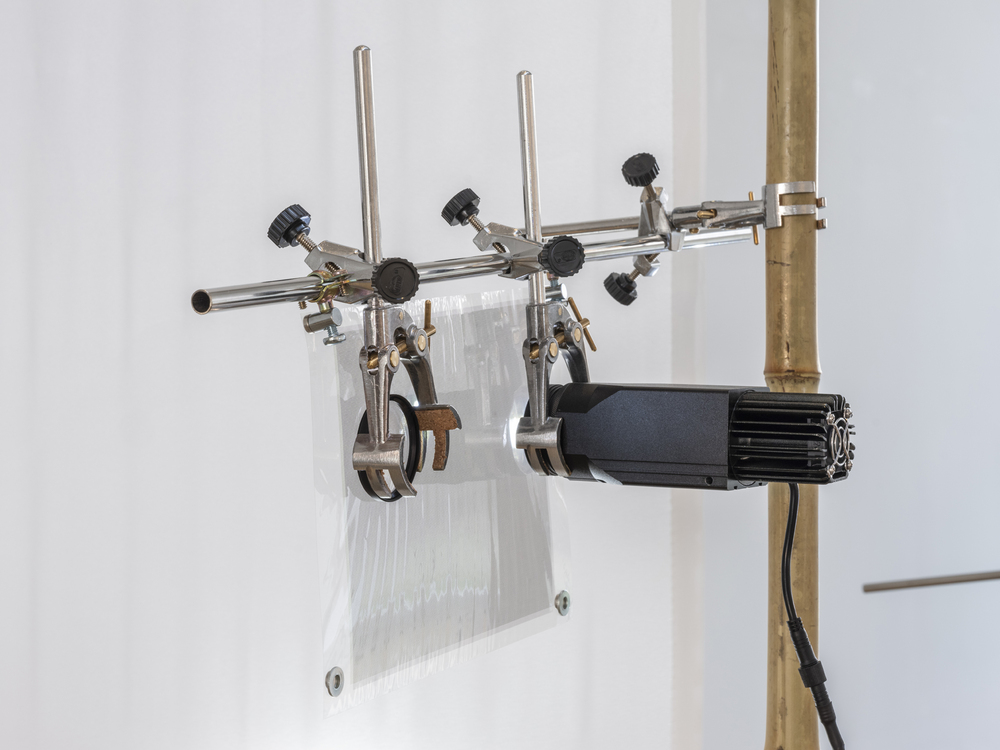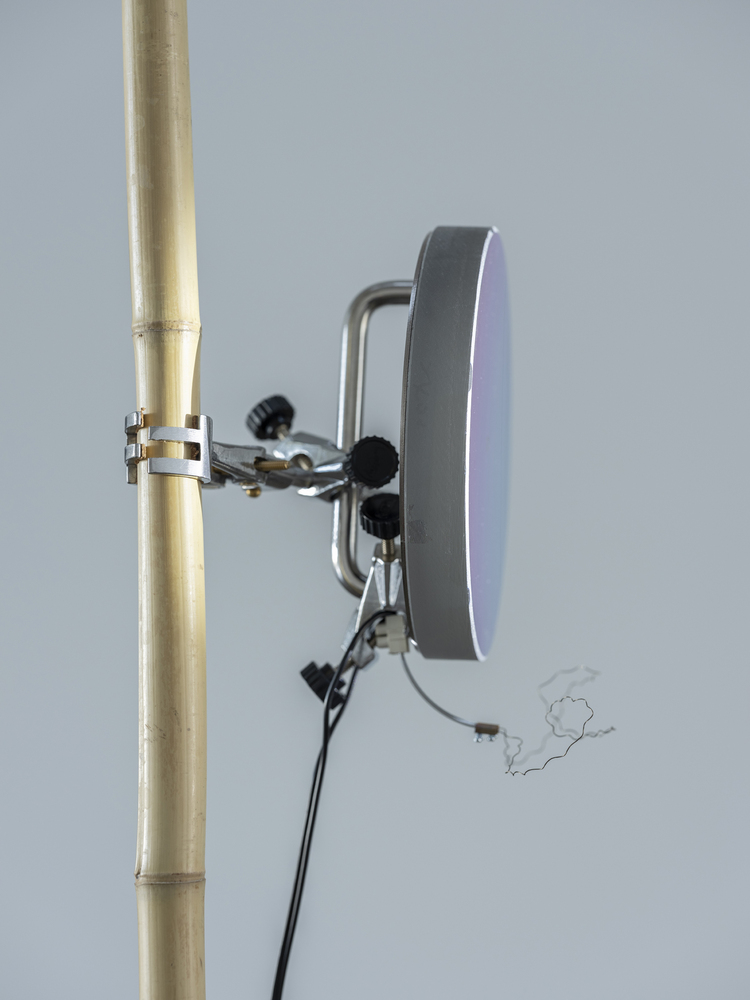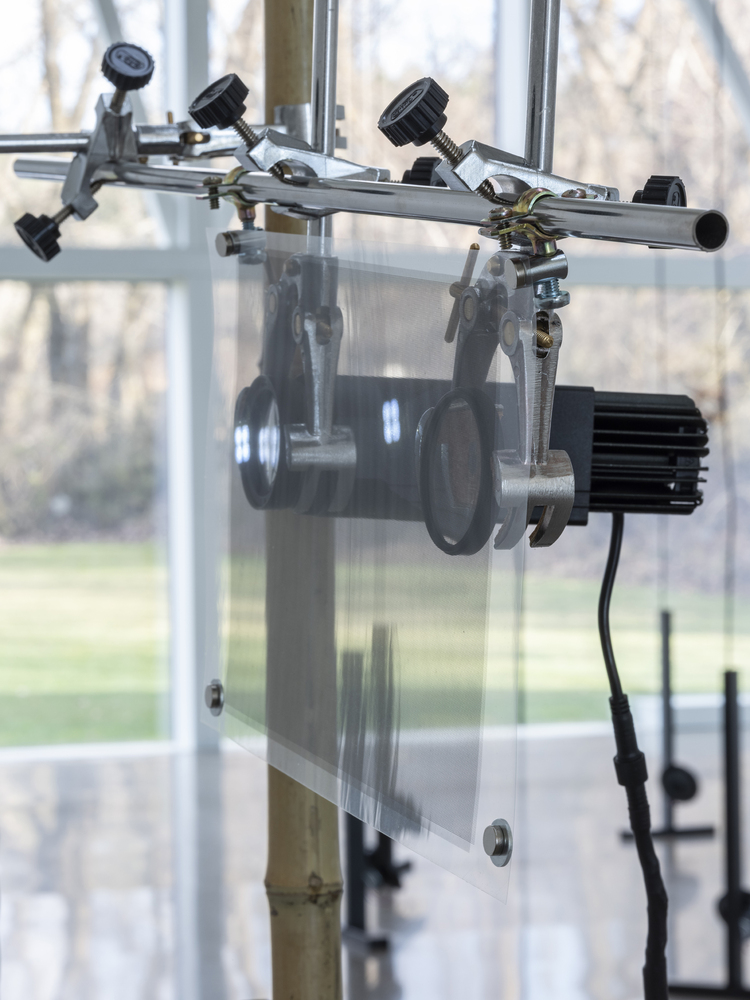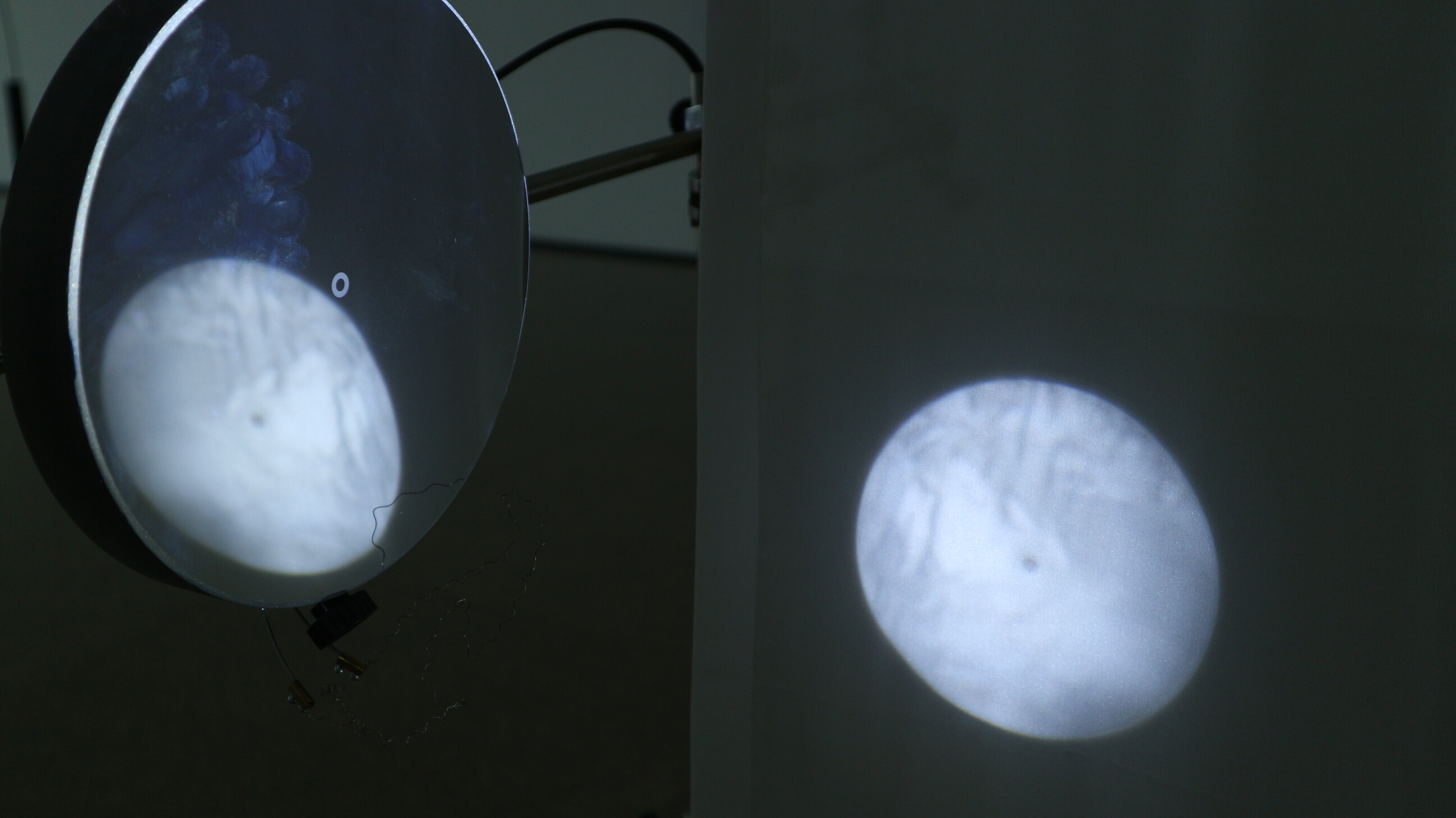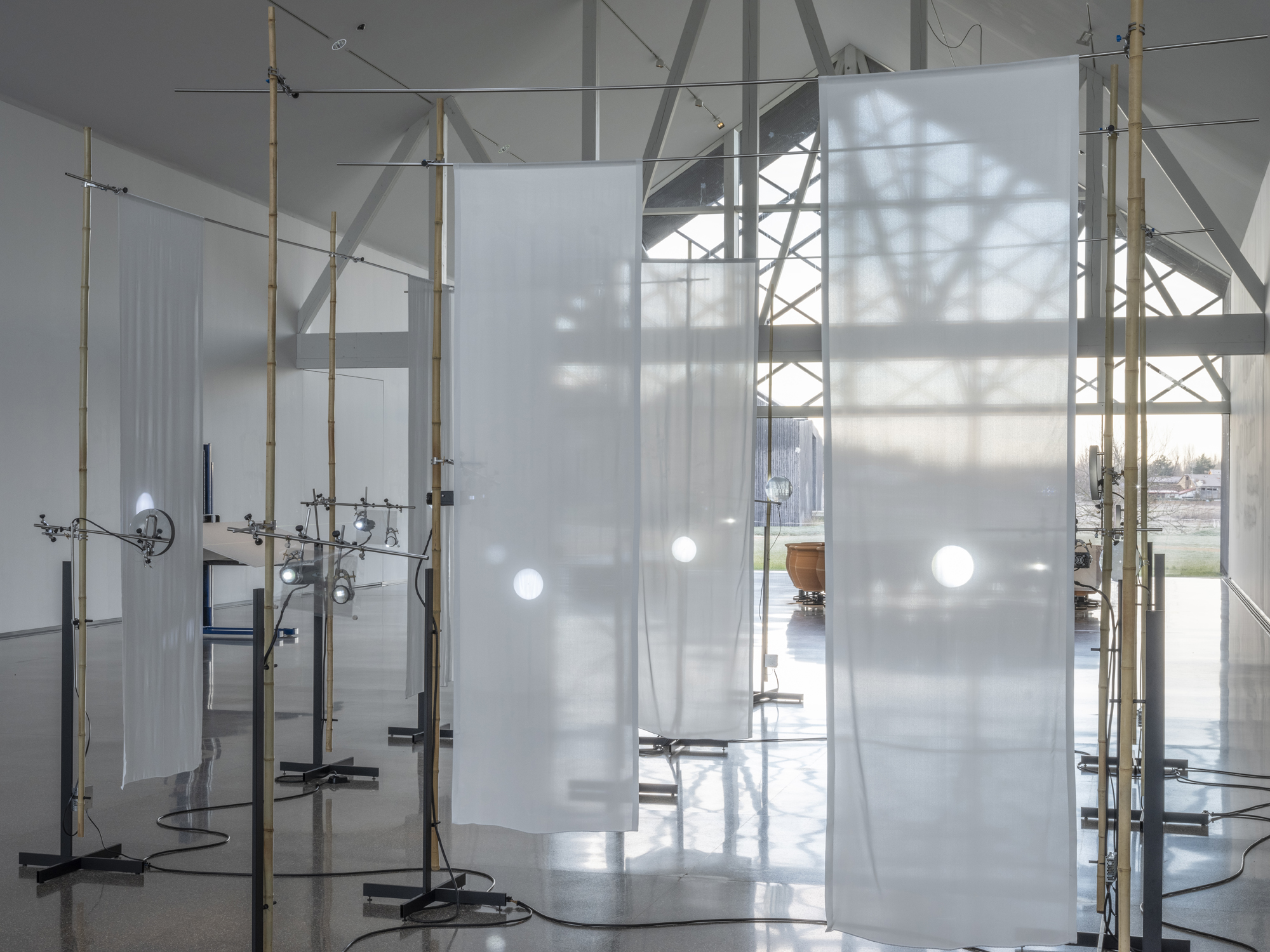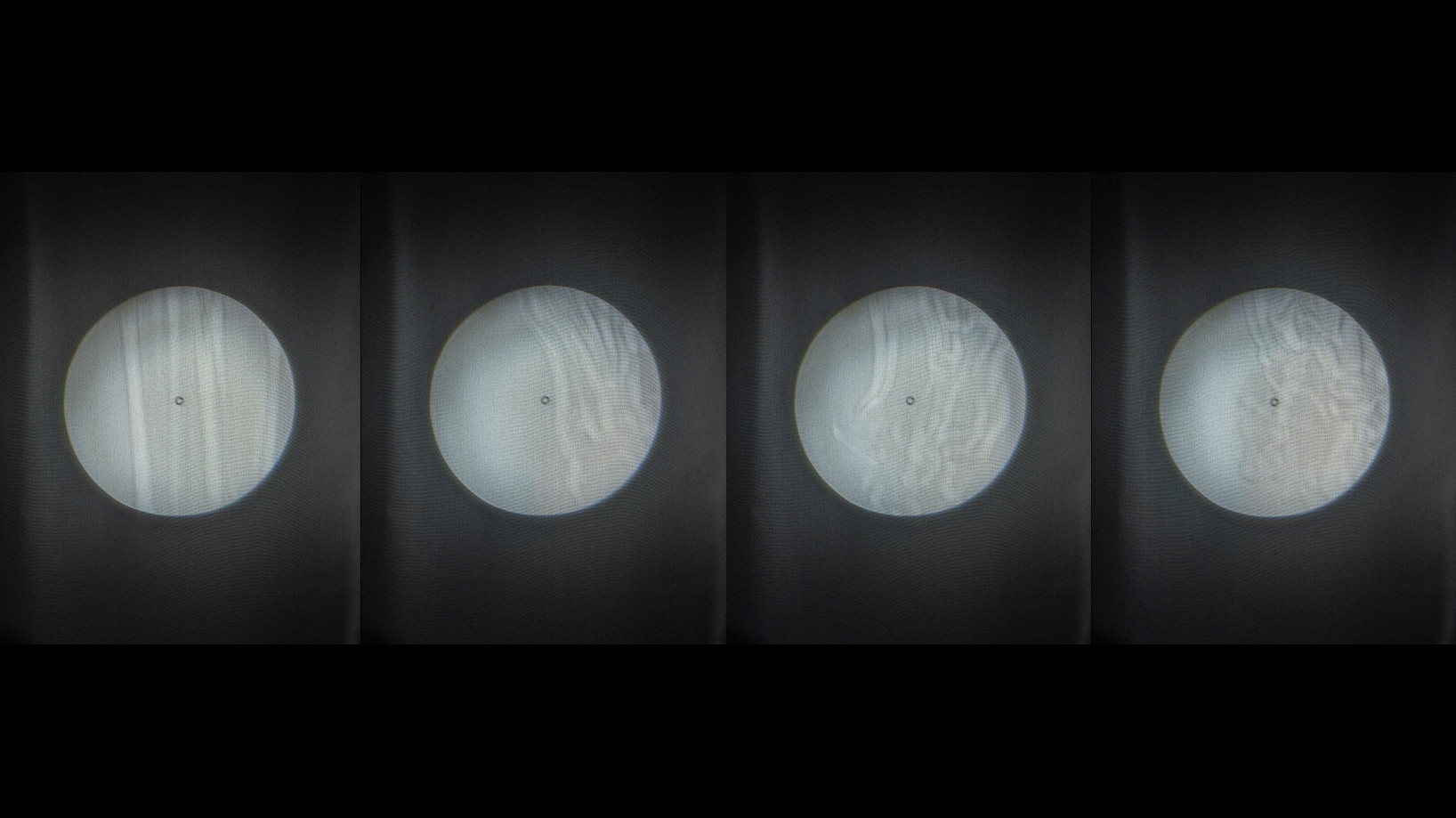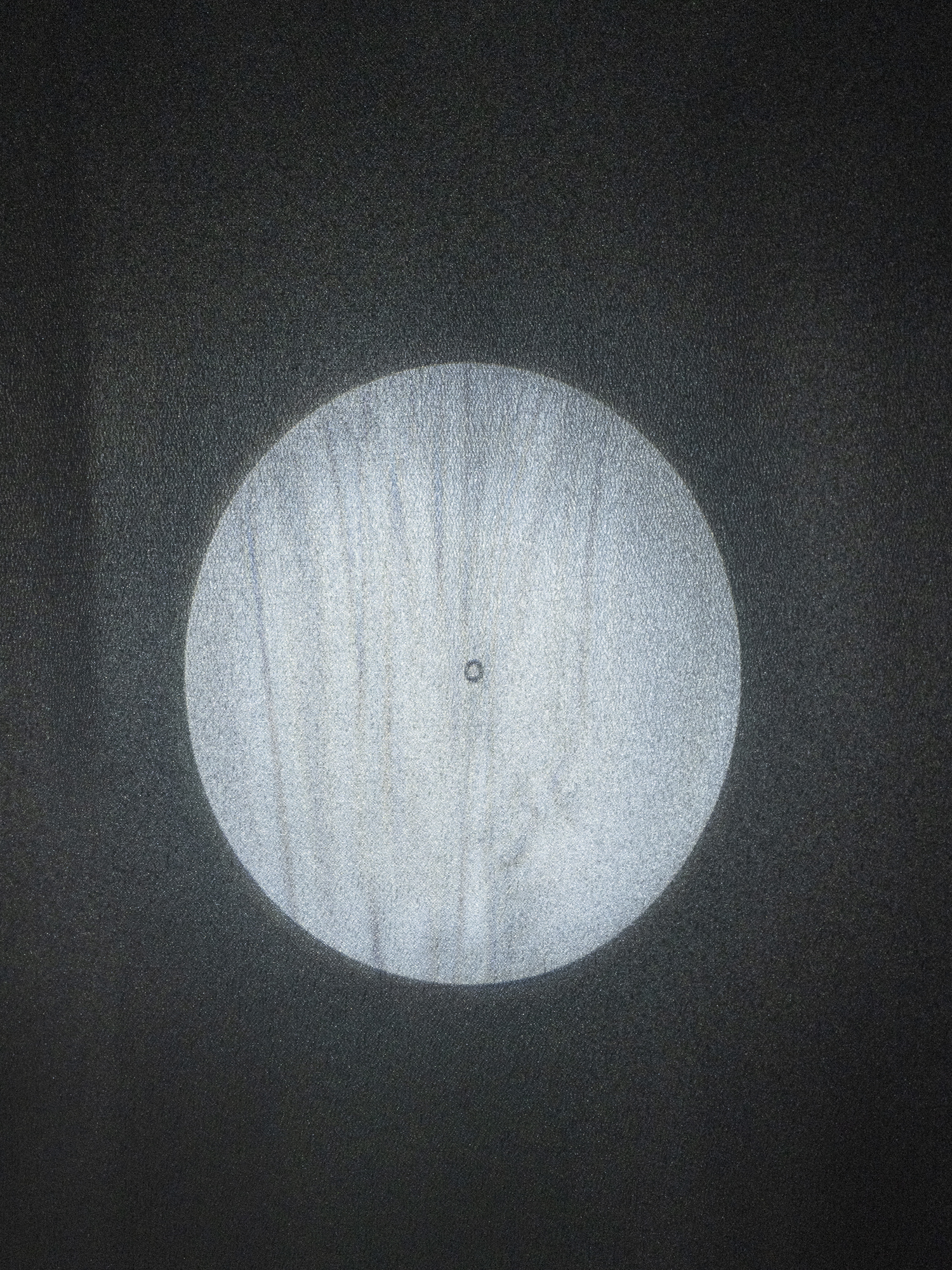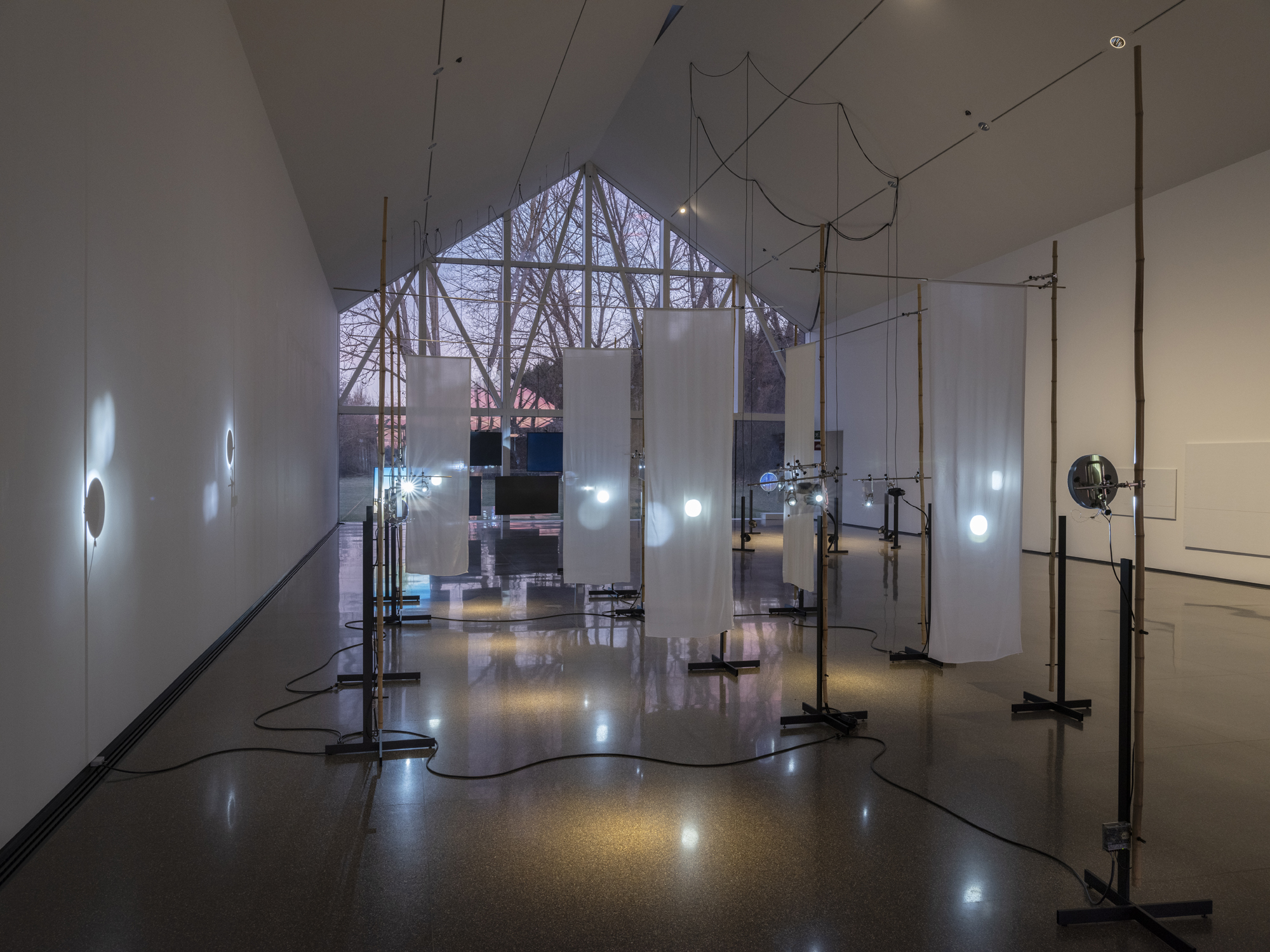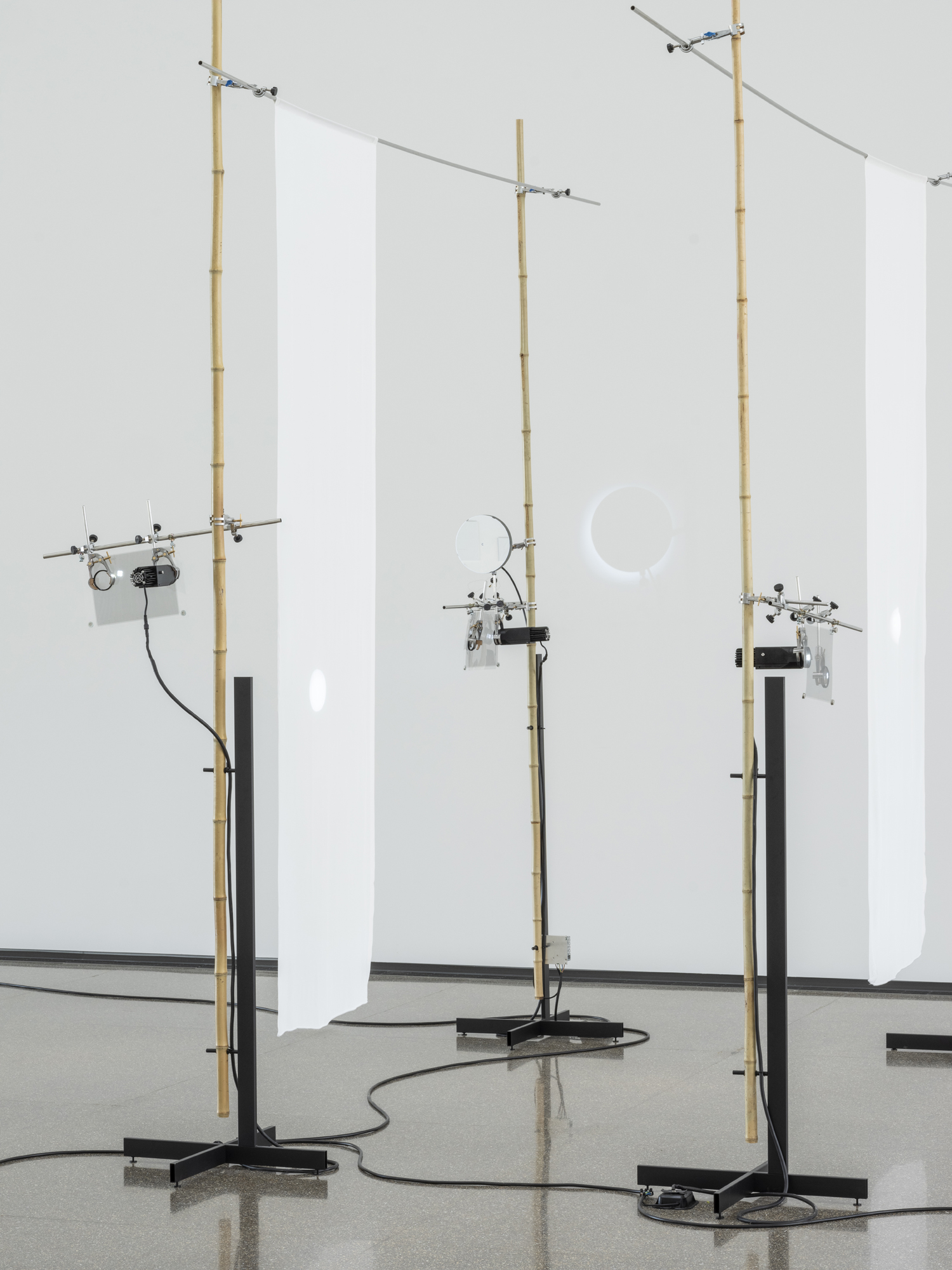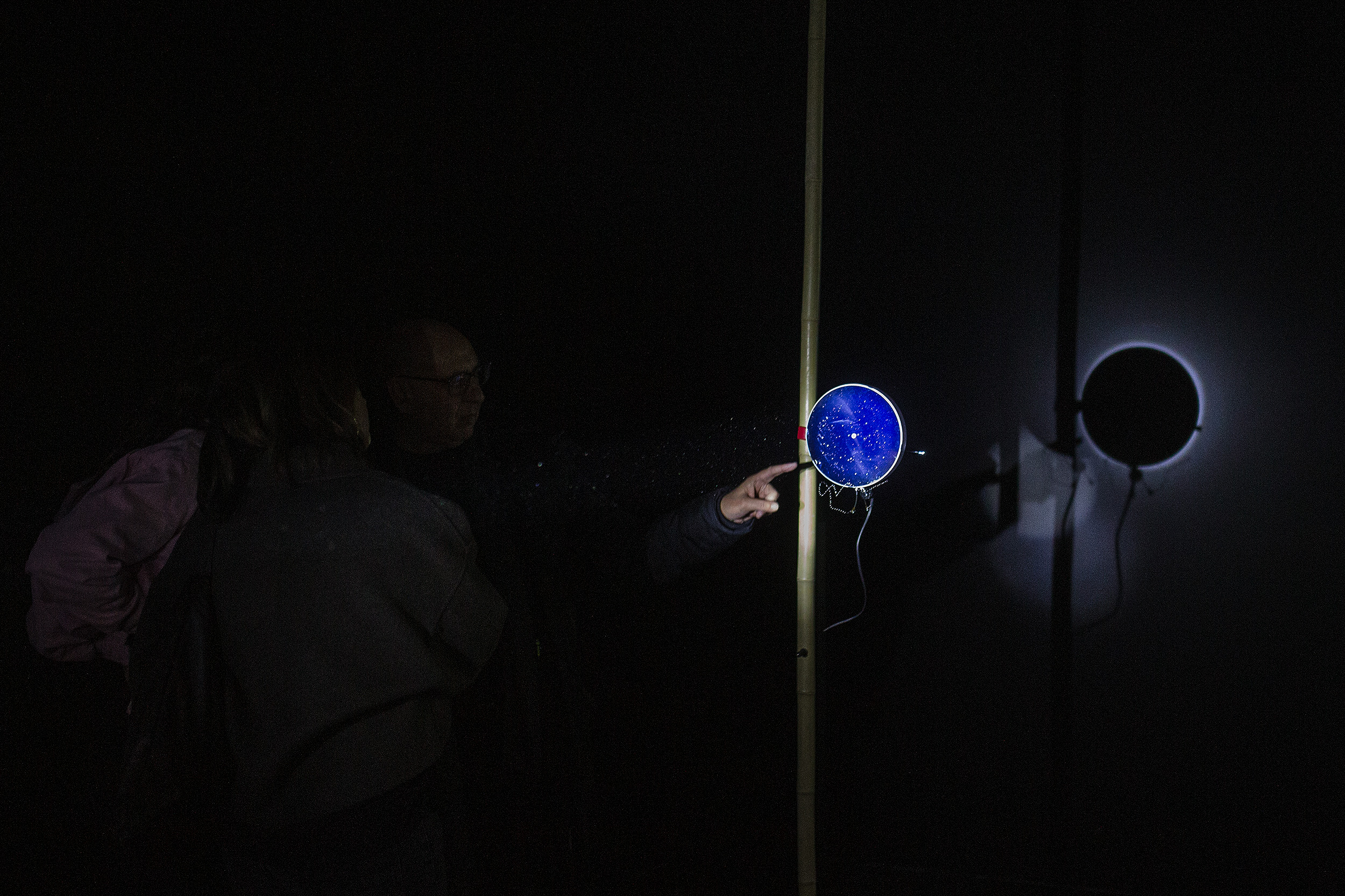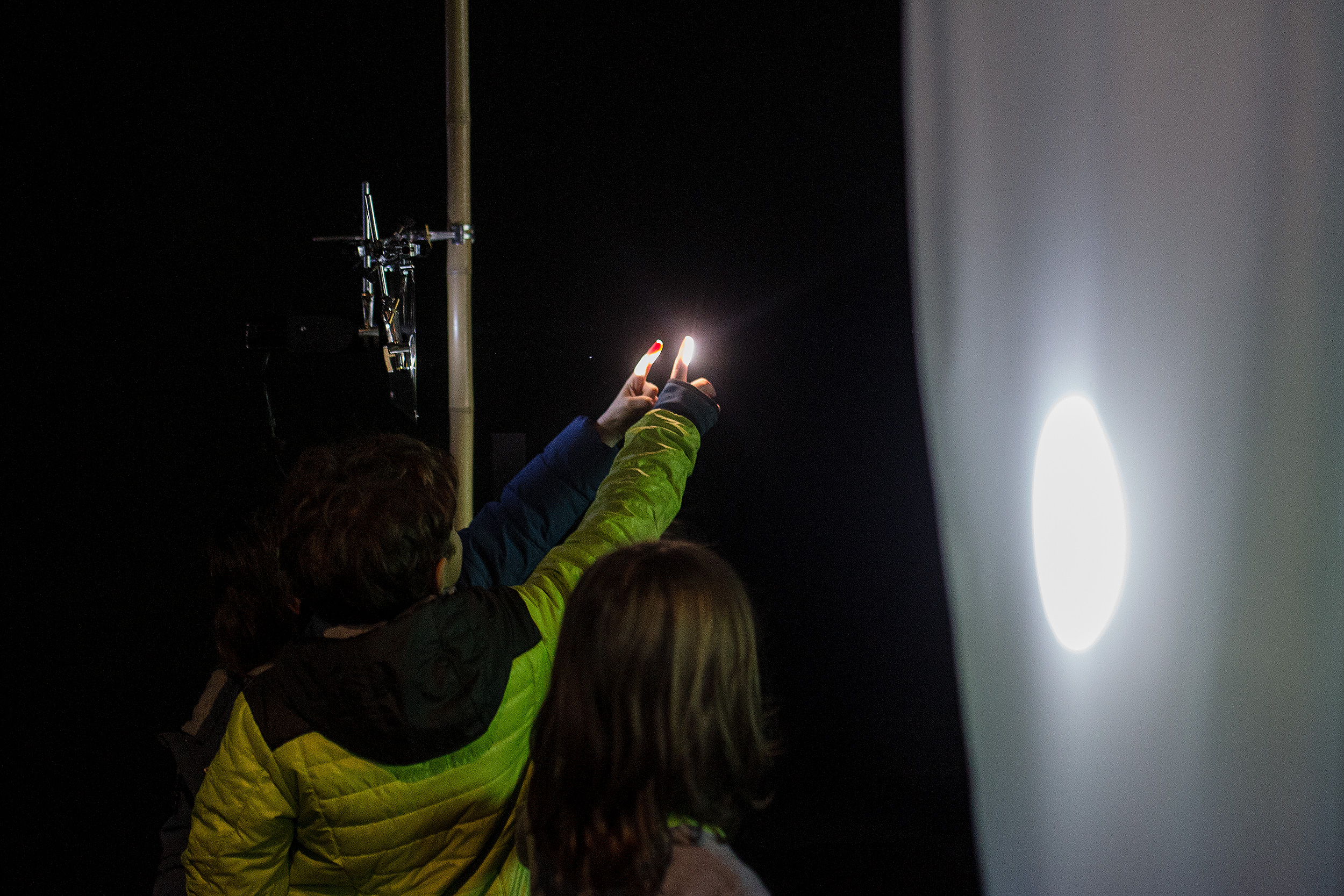As a Mutely Vibrating Consonant
Installation. Mixed media: bamboo, silk, support structures, modified spotlights, parabolic mirrors, optical lenses, nichrome wire and electronics. Variable dimensions.
2023
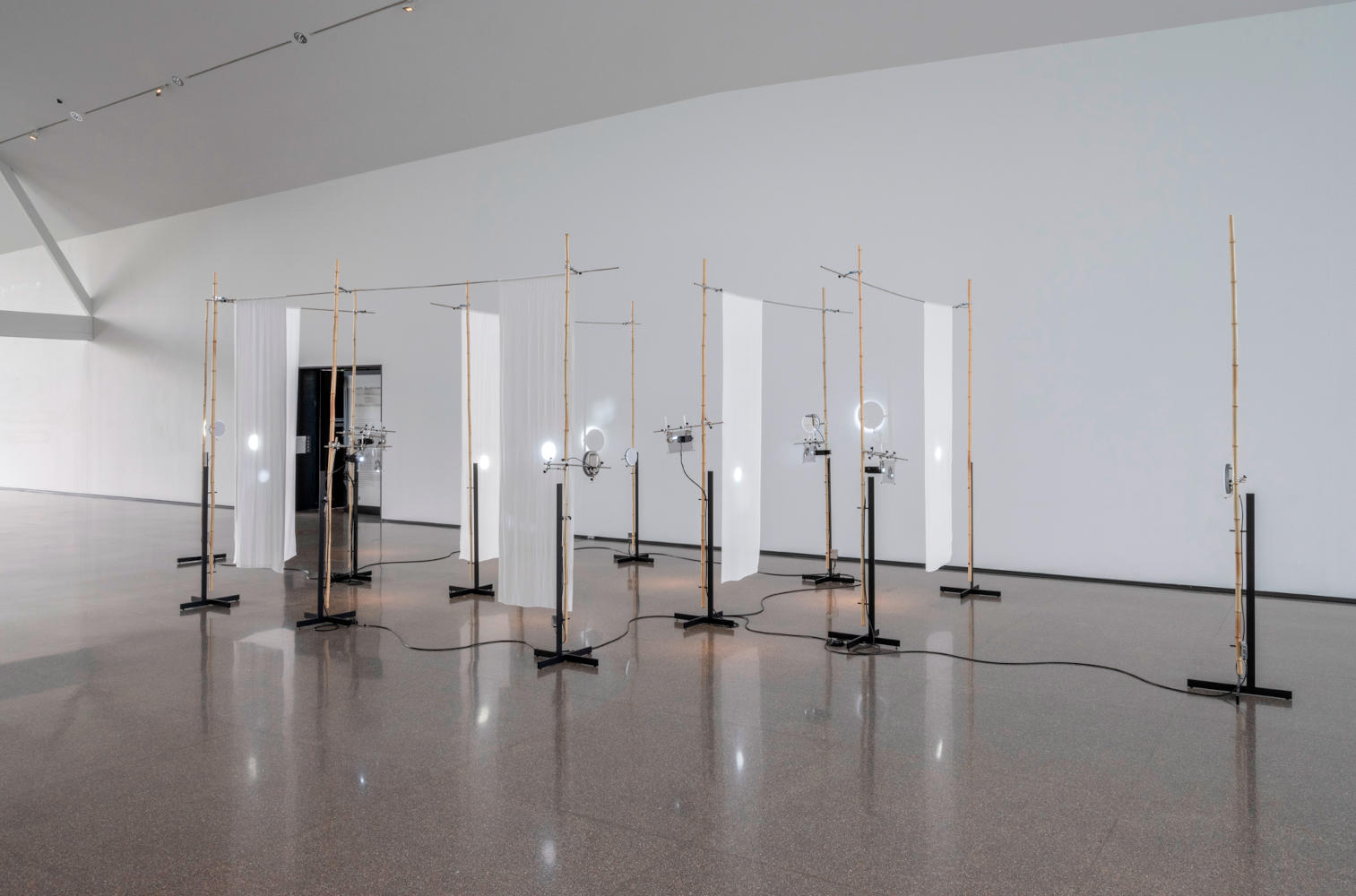
The schlieren technique names a diagram of analog components that brings to visibility minute optical disturbances—Schlieren meaning impurities in German—such as those caused by temperature differences in the air in a room. Since its definite development during the 19th century, it has been used to see and photograph otherwise invisible currents of air with the aim to trace their paths inside models of buildings, wind tunnels or in contexts such as medical imaging.
The installation—which takes its name from the poem Schliere im Aug by Paul Celan—presents the elements that make up this mechanism in a space open to the wandering of visitors. The parabolic mirrors, spotlights, lenses and projection screens are arranged in space to allow the transit in between the material layers that make up the projected images. While walking between the silk screens and the bamboo tutors that hold the optical components, visitors walk through the layered visual circuit traced by light beams, grids and projection screens.
Inside this space, the movements of the bodies generate the currents that these same components make visible. In this way, the air in the installation brings the bodies literally into contact with the visual circuit of images that generates the visualization of the air currents. In between, gazes, movements and air currents—body and image—dissolve in the material circuits of the image, as a silent, mutely vibrating consonant.
La técnica de Schlieren (impurezas en alemán) ha permitido desde el siglo XIX ver y fotografíar perturbarciones ópticas mínimas tales como las causadas por diferencias de temperatura en el aire de una sala. Desde entonces ha sido empleada para visualizar corrientes de aire y trazar sus recorridos en maquetas de edificios, túneles de viento o imágenes médicas.
Coproducida por la Fundación Cerezales Antonino y Cinia y la Academia de Artes Musicales y Escénicas de Praga, la instalación -que toma el nombre de unos versos del poema Schliere im Aug de Paul Celan- presenta los elementos que componen este mecanismo (espejos parabólicos, focos, lentes y pantallas de proyección) en un espacio abierto al deambular de los visitantes. Al caminar entre las pantallas de seda y los tutores de bambú, el movimiento de los cuerpos genera corrientes que estos mismos dispostivos visualizan. En medio, como una exhalación sostenida en el tiempo, miradas y corrientes de aire -cuerpo e imagen- se disuelven, como muda consonancia vibrante.
Co-produced by the Foundation Cerezales Antonino y Cinia and the Academy of Music and Performing Arts in Prague
Collection FCAYC (Fundación Cerezales Antonino y Cinia)
Selected shows:
| 2024 | Apories sobre l'aire. Bòlit. Centre d'Art Contemporani de Girona |
| 2023 | La balsa. Tres actos para una intemperie. Fundación Cerezales Antonino y Cinia |
Selected publications:
| 2024 | Abelardo Gil-Fournier, Jussi Parikka, Enclosures of Wind: Practice-Led Methods for Visualization of Elemental Media Media+Environment, Vol. 6, Issue 2 |
| 2024 | Juan José Santos, Abelardo Gil-Fournier. Fundación Cerezales Antonino y Cinia Artforum (March) |
| 2024 | Abelardo Gil-Fournier, Alfredo Puente, La balsa. Abelardo Gil-Fournier en conversación con Alfredo Puente Revista Concreta 23. La composición activa de la presencia. Eds. Jara Rocha & Nicolas Malevé |
